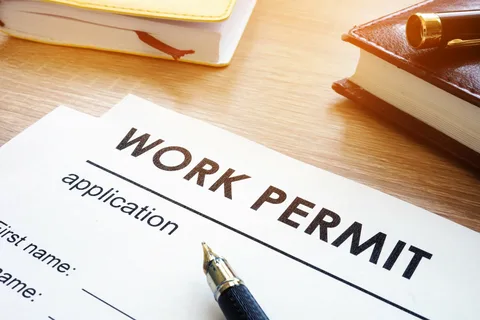Navigating the process of working abroad often involves understanding two key documents: work permits and work visas. Though these terms are sometimes used interchangeably, they serve different purposes and come with distinct requirements. This blog will break down the differences and explain how each one plays a role in gaining legal employment in a new country.
1. “What Is a Work Permit?”
- Definition: A work permit is an authorization issued by a country’s government allowing a foreign national to take up employment within its borders. Typically, a work permit is specific to a job, employer, or field.
- Example: In Canada, applicants may need an employer-specific work permit, which restricts them to work with one employer, or an open work permit, which allows them to work with any employer in certain cases.
- Tip: Research the specific work permit types available in your destination country and their requirements, as these vary widely.
2. “What Is a Work Visa?”
- Definition: A work visa allows an individual to enter a foreign country specifically to work, often accompanying the work permit or being combined with it in some cases. It is issued by the destination country’s embassy or consulate.
- Example: The H-1B visa in the United States is a work visa that allows professionals to work in specialized fields for a designated employer.
- Key Point: A work visa is generally obtained before entering the destination country, whereas work permits may be issued after arrival or in tandem with the visa.
3. “Key Differences Between Work Permits and Work Visas”
- Purpose: While both documents enable employment, a work visa primarily serves as an entry document, and a work permit allows the holder to legally work once inside the country.
- Issuing Authority: Work visas are issued by a country’s embassy or consulate, while work permits are typically issued by a labor department or immigration authority within the country.
- Timing: Work visas are often applied for and granted prior to travel, while work permits may be applied for after arrival or concurrently.
- Restrictions: Work permits may be limited to specific jobs or employers, whereas work visas primarily dictate the length of stay and the purpose of entry.
4. “Common Scenarios Where Both Are Required”
- Example: For certain countries like the United States, individuals applying for an H-1B visa need both the visa (for entry) and an approved labor certification (work permit) that confirms the employer has a legitimate job offer.
- Example 2: In European Union countries, non-EU nationals may need both a work visa to enter and a residence/work permit to stay and work legally.
- Highlight: Each country has different rules, so check if your destination requires both or if one document will suffice.
5. “How to Apply for a Work Visa and Work Permit”
- Work Visa Process: Start by researching the specific work visa type available in your field and check the entry requirements. Submit your application through the relevant embassy or consulate, usually involving a job offer, employer sponsorship, and proof of qualifications.
- Work Permit Process: Many countries require employer sponsorship, so it’s common for employers to apply for a permit on behalf of the worker. Some countries may allow individuals to apply directly, but this depends on the work permit type.
- Tip: Always follow official government guidelines and consult the specific embassy’s website for accurate and up-to-date requirements.
6. “Common Work Visa and Permit Categories”
- Skilled Worker Visas/Permits: For professionals in specialized fields (e.g., IT, engineering).
- Seasonal/Temporary Worker Visas/Permits: For short-term employment in fields like agriculture or tourism.
- Intra-Company Transfer Visas/Permits: For employees transferring within the same company to a branch in another country.
- Post-Study Work Visas/Permits: For international students looking to gain work experience post-graduation.
- Highlight: Understanding the specific categories can help applicants select the right path for their situation.
7. “Special Cases: Work Permit Exemptions”
- Overview: In some cases, individuals may be exempt from needing a separate work permit. Examples include short-term business visitors or executives with certain privileges.
- Tip: If you’re eligible for an exemption, ensure you have documentation confirming this to avoid misunderstandings at the border.
8. “Challenges in the Work Visa and Permit Process”
- Potential Delays: Processing times can vary and often depend on country-specific factors and the type of work visa/permit.
- Employer Sponsorship Issues: Securing sponsorship can be challenging; some countries limit the number of foreign workers an employer can sponsor.
- Tip: Start the application process as early as possible and have a backup plan in case processing times exceed expectations.
9. “The Importance of Following Legal Procedures”
- Overview: Working without the correct permits or visas can lead to serious consequences, including deportation and bans on future entry.
- Advice: Emphasize the importance of adhering to legal procedures and not attempting to work without proper authorization.
- Tip: Regularly check government immigration websites for updates on regulations, as immigration laws frequently change.
